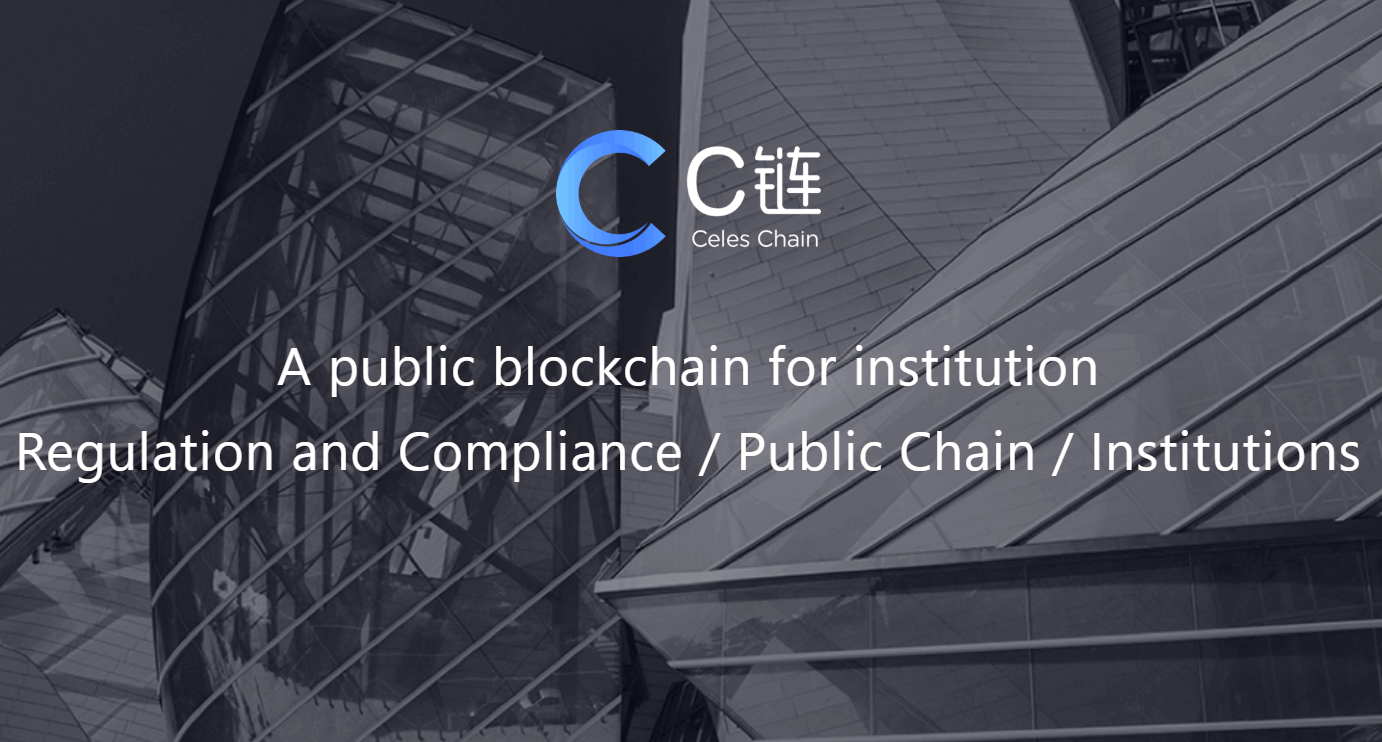Etherisc's Smart Contract Insurance Protocol
Source: Smith + Crown
Ethrisc is developing a decentralized insurance protocol intended to support the emergence of a wide range of specialized insurance products across a variety of markets. The distributed, smart contract-based system is conceived of as a platform dApps can build on and extend with smart contract libraries and risk models that enable products like flight insurance or localized weather insurance. The aim is for the products
to be less expensive and less subjective than products from traditional insurance companies, while also being more transparent and responsive. Several insurance products are being launched on Etherisc, and a live MVP insurance product insuring against flight delays has issued ETH payouts to several policy holders. The DIP token functions as a staking requirement for anyone collecting fees on the platform.
What the Decentralized Insurance Protocol Intends to Accomplish
The modern insurance industry is built around three core elements:
- Calculated expected value of the risk: refers to the anticipated amount to be paid out over an identified time frame. If crops are being insured against failure, what do historical records and statistical tables indicate will be the expected number of failures in a given season or year? This informs premiums charged by the insurer.
- Capital cost (or reinsurance) for long tail risks: effectively are a reserve in the event that a 100 year drought sends crop failures out to multiples of anticipated amounts. Does the system have the capital reserves to cover this eventuality as well?
- Transaction costs: are the incidental costs associated with normal business operations, and are also related to the complexity and customization required per product.

If the above represent the core elements of an insurance operation, in practice, most of the world interacts with a system where two additional elements have become commonplace:
- Administration: refers to the general overhead of the large insurance companies that are required to operate their system, the costs of which must be built into the premiums individuals and businesses pay for coverage.
- Shareholder return: must be factored into premiums and decisions regarding payouts, at least to the extent that insurance companies have shareholders expecting a return on their own capital.
Etherisc proposes a decentralized protocol upon which anyone can launch smart-contract based insurance products. They contend that a blockchain-based platform has the potential to decrease transaction costs, administration costs, and remove the pressures of shareholder return, while at the same time enabling new parties to contribute both models for calculating the expected value of risk and capital for long-tail risks. Smart contracts can automate premium collection and payouts, while also making obligations more transparent. A protocol that standardizes how insurance products are presented, structured, and managed creates additional opportunities to reduce inefficiencies and administrative overhead on a corporate level, enabling the further reduction premiums. Beyond this, creating a protocol-based system, where token holders effectively replace shareholders, will remove the need to provide a return to capital, allowing a further reduction of financial obligations that filters back to premiums.
This approach lends itself in particular to a focus on parametric insurance markets, where outcomes are generally quantitative ones that are informed by sensors or other automated means that are able to communicate with smart contracts. An example can be seen in the hurricane insurance program, where payouts are based solely on recorded wind speeds, in flight insurance programs that measure delays, or in crop insurance projects based entirely upon rainfall amounts. This type of insurance generally relies on objective indicators and has payouts not determined by estimated loss, leaving insurance companies less room to fight payouts. Etherisc also argues that traditional insurance against loss will nonetheless benefit from a system that at the very least, reduces the administrative costs of managing capital.
In addition, compared to typical insurance companies that often work to avoid or reduce customer payments, the more transparent nature of a smart-contract based system should reduce both time spent disputing and disappointment with insurance policies, due to less opaque obligations. The overall result is imagined as a new type of insurance company that will be able to honor justified claims and rapidly settle outstanding issues, all while dedicating a considerably smaller percentage of premiums to administration and overhead. When Etherisc claims that a blockchain-based insurance system could be operated for an order-of-magnitude less than a traditional insurance company, the scale of the opportunity can be appreciated.
The system involves an array of on-chain actors that have direct counterparts in the traditional insurance industry.
Keepers: keepers package and offer insurance products based on smart contracts. Etherisc imagines these could be entrepreneurs, data scientists with new risk models, or traditional insurance providers offering new products. Keepers determine the premium and payouts of their products. They are also responsible for determining whether policyholders are allowed to buy policies e.g. farmers must actually plant crops to qualify for crop insurance.
They are also considered responsible for recruiting an array of other service providers as needed, discussed below. Keepers can fully integrate these functions or rely on partners.
- Underwriters: Underwriter evaluate risk models for pricing policies, determining the premiums and payouts to keep policies solvent.
- Oracles: Verify off-chain conditions that should trigger payouts. In cases of parametric insurance, systems like sensor networks or information sources could serve as oracles, or trusted third-parties could serve as final verifiers of payouts.
- License Providers: Keepers ultimately choose whether to operate with a license. Etherisc imagines that established insurance companies could earn fees for ‘renting’ or allowing others to operate under their license(s) in a particular jurisdiction. As with keepers, fees are established by the provider, encouraging competition between providers.
- Claims Adjusters: In cases where loss needs to be estimated, claims adjusters would be responsible for providing the necessary adjustments to payouts.
Risk Capital: Keepers may collateralize the product with their own capital, or acquire additional backing for their product either through collateralizing a risk pool and selling tokenized fractions of it, or acquire reinsurance through a licensed reinsurer.
Relayers: Relayers are responsible for connecting users and the products that Keepers bring to the market. These website would advertise insurance, likely from multiple Keepers. Relayers are imagined as helping police against bad products by choosing not to list them, for example, by choosing to only list products with insurance licenses, though Relayers can list any product they want. Keepers can also establish themselves as their own Relayers, offering a website on which people can sign up for policies. Flightrisk, operating today, is example of a product choosing to advertise on its own site, though presumably eventually consumers will need insurance product aggregators to discover and compare insurance products. Relayers establish their own fees for listing insurance products.

Etherisc is structured around what it calls a ‘Two-Fold Approach,’ reflecting the structure of the ‘Decentralized Insurance Foundation’ and the multiple for-profit commercial entities unique to a jurisdiction that form companies such as Ethereisc Holding AG, Etherisc US, or Etherisc MT. These jurisdictionally specific entities are in turn controlled by the Decentralized Insurance Foundation. The jurisdiction-based entities serve as the local repository of contracts and provider of platform services, allowing and encouraging new projects to join to access the smart contracts and services within the protocol. This structure should allow localization of insurance products, which are usually heavily regulated by jurisdiction.
New projects joining the protocol will in turn create a ready market for other elements of the broader Etherisc ecosystem, whether they be oracle providers, KYC services, licensed insurance companies who legally ‘rent’ their licenses by allowing firms to piggyback on their own licences, relayers, data scientists with unique risk models to cover entirely and yet-uninsurable forms of risk, or claims adjusters qualified to serve as trusted authorities for traditional insurance. As the network grows, additional capital should be attracted by the opportunity to pledge funds to the risk pools functioning as reinsurance pools within the network, standing ready to insure the larger tail-risk scenarios that might require excess capital beyond the immediate capacity of a small insurance dApp.
A Platform for New Insurance Products
This design is intended to support the emergence of new insurance products while also enabling forms of insurance recognizable today. For example, insurance products for smart contracts or cryptoassets could emerge if entities like OpenZeppelin could step in as underwriters to assess smart contract vulnerability, cryptoasset holders stepped in with risk capital, and developers and cryptoasset users purchased policies. Etherisc imagines the protocol as a potential platform for anyone to monetize an ability to develop better risk models than those that exist today or more specialized risk models in niche markets, for example, rainfall in certain specific geographic areas.
DIP tokens are used by all service providers throughout the system–any entity earning fees will be required to stake tokens in a proportion between 15-25% of their monthly income on the platform. Users are not required to use DIP to pay for insurance products or receive it as payouts. Given that premiums are collected on-chain and fee structures should be written into the insurance product smart contracts, this monthly income should be easily calculable, though the method of enforcement and potential punishment for noncollateralized activity is still being determined. If the requirement can be seamlessly enforced, DIPs value should track both overall adoption of the platform, as it is a ratio of realized revenue for all participants on the platform, and the on-chain fee structure of the participants.
For example, if $120 billion were purchased in insurance products, with an average total aggregate service provider fee of 10% resulting in $1 billion in collected monthly fees between Keepers, Relayers, and other service providers, then at least $150 million to...
Google Shuts Down Its Crypto Ban Rumor Mill
Author: Tedra DeSue / Source: Cryptovest
Google is making a lot of headline news in the crypto space as of late, and there’s at least one area that deserves particular attention. It entails Google’s AdWords, which, as of this week, is called Google Ads. Since this name change, reports are surfacing that suggest Google’s anti-crypto stance doesn’t apply to this service.
It does.
Google slap
Google has taken several steps that observers see as the tech giant’s attempt to avoid the dark side of the crypto space. For example, this week it removed MetaMask—a browser-based Ethereum wallet—from the Google Chrome Web Store. The move sparked a panic inside of the community, and even MetaMask tried...
Blockchain Problems Exist, Or are They Just Limitations
Author: Wilton Thornburg / Source: CoinCentral
Blockchain problems exist. Or to put it another way, limitations exist in what blockchain offers.
Whenever a new technology emerges, expectations skyrocket as to what it accomplishes and how it changes the world. Personal computers brought digital technology to the masses, yet large corporations continue to depend on mainframes. The internet connected everyone, but as a result, no one keeps their privacy.
In The Beginning
Satoshi Nakamoto invented blockchain in 2008 as the technology underlying Bitcoin. Blockchain provides a decentralized mechanism where transactions occur without any of the parties needing to trust each other. Asymmetric cryptography ensures security and privacy.
Even in the context of the Bitcoin network for which it was created, blockchain problems exist. The rigid monetary policy of Bitcoin limits transaction completion to once every 10 minutes. Modern business demands faster results.
Vitalik Buterin identifies scaling as a primary concern that needs to be addressed in blockchain technology. He made the following comments in September 2017 in an interview with Naval Ravikant at the Disrupt SF 2017 conference:
“Bitcoin is currently processing a bit less than three transactions a second; and if it goes close to four, it’s already at peak capacity. Ethereum over the last few days, it’s been doing five a second. And if it goes above six, then it’s also at peak capacity. On the other hand, Uber on average — 12 rides a second, PayPal — several hundred, Visa — several thousand, major stock exchanges — tens of thousands. And if you want to go up to IoT, then you’re talking hundreds of thousands…”
Show Me The Money
Consequently, the purpose of Bitcoin evolved from Satoshi’s original vision. He titled his white paper “Bitcoin: A Peer-To-Peer Electronic Cash System“, but these days you hear more talk of Bitcoin being a store of value like gold rather than electronic cash. A store of value does not require the speed of electronic cash transactions.
This also introduces blockchain problems in the form of tribal warfare. One tribe argues for the purity of Nakamoto’s original vision, and another tribe argues for innovation. Consequently, various blockchains proliferate. This blockchain does this, and that blockchain does that, and another blockchain does something else again. All this creates a mass of confusion about who knows best and which way to go forward.
Assume the future holds a multitude of various blockchains you use, just like you currently visit a variety of different websites. The decentralized nature of blockchain demands you host some version of a network node on your computer or device. How many nodes will you need? When will the storage requirements burden your system? What other pitfalls await you in this scenario?
Peter Picked a Peck of Wallets
And cryptocurrencies require wallets for storage, but no single wallet stores every cryptocurrency. You need multiple wallets. How many wallets will you need to keep track of? You lose a wallet, and you lose your money. What if your wallet crashes but you lost the seed? What happens if you die but your heirs have no way to access your wallets?
...
An Old Debate Re-Ignited
Stakeholders in Ethereum have resumed a debate from last year concerning the Parity Technologies hack and its fall-out. Parity was a wallet services start-up in the summer of 2017. In November, a hacker made off with about $32 million worth of ether due to Parity’s vulnerabilities.
The question is whether Ethereum ought to institute a system-wide upgrade known as Ethereum Improvement Proposal (EIP) 999 as a way of returning money lost as a consequence of the hack. EIP 999 would reactivate 564 of Parity’s wallets.
Some in the community think money lost should stay lost. Yes, it is unfortunate but it is also critical to the integrity of the whole system that the blockchain not be tampered with. This is sometimes known as the Code-is-Law view. One might also call it the We’re-Not-Central-Bankers view.
The most recent flare-up of the debate began on Saturday, July 19, when the Council of Ethereum Magicians (yes, that’s the body’s name) met to discuss technical updates and code disputes. Afri Schoenden asked to advance EIP 999 within the code review process.
The move set off a social-media firestorm. One tweet runs: “The Parity bailout was just stealth ‘accepted’ by the Ethereum Foundation despite community rejection.” Apparently that is an overstatement of what has happened, although the idea of a reactivation of those wallets is moving … slowly … forward.
A Patent-Based Bull Run
There has been something of a boom of late in cryptocurrency related patent applications filed by Big Money players. Wells Fargo, for example, applied for a patent on a system in which any type of ‘data element’ can be located, protected, and accessed by means of its tokenization.
Meanwhile, Bank of America now has 45 blockchain patents pending, adding the latest to that queue in recent days.
Those with romantic visions for a blockchain revolution may have (at best) mixed feelings about what they may see as its corporate co-optation, and the fencing in of a commons at that. Still, the boom in filings may mean good things for the prices of the more venerable currencies in the field. Bitcoins are now in the neighborhood of $7,500. That isn’t a pricey neighborhood if your mind is still focused on the December 2017 numbers, but it is a significant improvement over late June.
Peter Gabriel: From Genesis to Blockchain
Peter Gabriel, the English (Surrey born) songwriter and performer known as one of the founders of that landmark of prog rock, Genesis, and for his epic solo video hit “Sledgehammer” in 1987, is one of the backers of a blockchain startup designed to provide transparency to the food industry.
The German statesman Otto von Bismarck famously compared laws to sausages. The ordinary citizen/consumer is best off not knowing too much about how either is made. But the point of the startup is to challenge the food-industry side of that analogy, on the presumption that in the 21st century a lot of people do want to know about the whole supply chain behind their sausages.
In a statement, Gabriel said that he is convinced the project, Provenance, “is going to find a big role going forward and will be of great use to the consumer” as well as leveling the playing field for “smaller, independent producers” trying to compete with the agri-giants.
Cancer Medicine Distribution Powered by the Blockchain
Healthcare looks to blockchain infrastructure to optimize the cancer medication supply chain.
Author: Stefan Filipović / Source: thetokener.com
Supply chains of the modern health systems are pretty complicated and inefficient. This is especially evident in the department of medicine supply where a lot of patients are not suited to their needs accordingly. On the other hand, some patients have the medications that they do not use. This is such a misfortune as there are many people that would make a good use of that medicine. Simply, current medicine supply chain cannot cope with these issues and ideas about changing it have been proposed. One of those ideas deals with the implementation of blockchain technology in the supply chain.
New Blockchain Infrastructure
The city of Memphis could be the host of a new blockchain infrastructure that should help cancer patients to easier get their medicine. This project is born out of the cooperation between FedEx Institute of Technology and Good Shepherd Pharmacy, Commercial Appeal reports.
Secure way of the blockchain information distribution will play a major role in the new supply chain. That characteristic of blockchain will enable that unused medication is retrieved and made available to the disadvantaged or people that do not have economic capacities to fund the needed medications. Good Shepherd...
Matic Network Instant Blockchain Transactions: Token Sale
Scalable and instant blockchain transactions. Matic Network brings massive scale to Ethereum using DPoS side chains.
Source: ICO Drops

Matic is a solid idea and one of the few plasma implementation side chain projects that exist today.
Strengths:
1) The project has already been endorsed by Decentraland with the Decentraland CTO Esteban Ordano one of the advisors on Matic panel.
2) They have already partnered with Parsec Labs which won the Ethereum Foundation Scaling Grant. Goes to show that the Matic and Parsec teams are moving on the right track to...
Walmart Looks to Blockchain for Package Tracking Patent
Walmart continues to develop blockchain applications to optimize the retail industry.
Author: Madeline Meng Shi / Source: CoinDesk
Walmart has yet another delivery-focused blockchain patent in the works.
The application published on July 5 is entitled "Delivery Reservation Apparatus and Method," and as suggested, it outlines a way for managing package reservations in the context of the purchaser not being available to actually receive it.
It's the latest blockchain retail supply chain "smart delivery" intellectual property play from the retail giant, which in the past year has submitted a number of U.S. patent applications in this area. Indeed, the company seems to be looking at the technology as a way to automate elements of the delivery process, but to date, much of the company's public-facing work with blockchain has been focused on food supply chain tracking.
In the newly released filing, Walmart detail system of delivery lockers – located at a person's home, transportation hub or other location – that can safeguard the delivered items until their recipients can come and actually sign for them. Blockchain fits into...
Bitmain Becomes Biggest Blockchain Conglomerate Following Series B Funding
Bitmain's series B funding closes to create the largest global cryptocurrency conglomerate in China.
Author: Sam Bourgi / Source: Hacked: Hacking Finance

China’s dominant bitcoin mining manufacturer has become the largest crypto conglomerate in the world after securing a new round of Series B funding.
Bitmain Expands Influence
Caixin news agency reported last week that Bitmain has secured between $300 million and $400 million in new funding from Sequoia China, U.S. hedge fund Coatue and Singapore-based EDBI, effectively becoming the largest cryptocurrency company in the world. With the latest round, Bitmain’s total value has swelled to $12 billion.
Bitmain is making waves across the blockchain industry, having recently announced plans to purchase roughly 43% of Opera Ltd., a Norway-based internet browser that has filed for an initial public offering with Nasdaq.
Back in May, the company led a $110 million financing round for Circle, an influential cryptocurrency company with backing from Goldman Sachs and others. In an official announcement, Circle said Bitmain’s stake in the company will allow it to expand critical infrastructure needed to power the crypto economy:
“Bitmain Co-founder and CEO Jihan Wu is well known for espousing a vision similar to ours regarding the creation and adoption of a new global economy powered by cryptographic...









